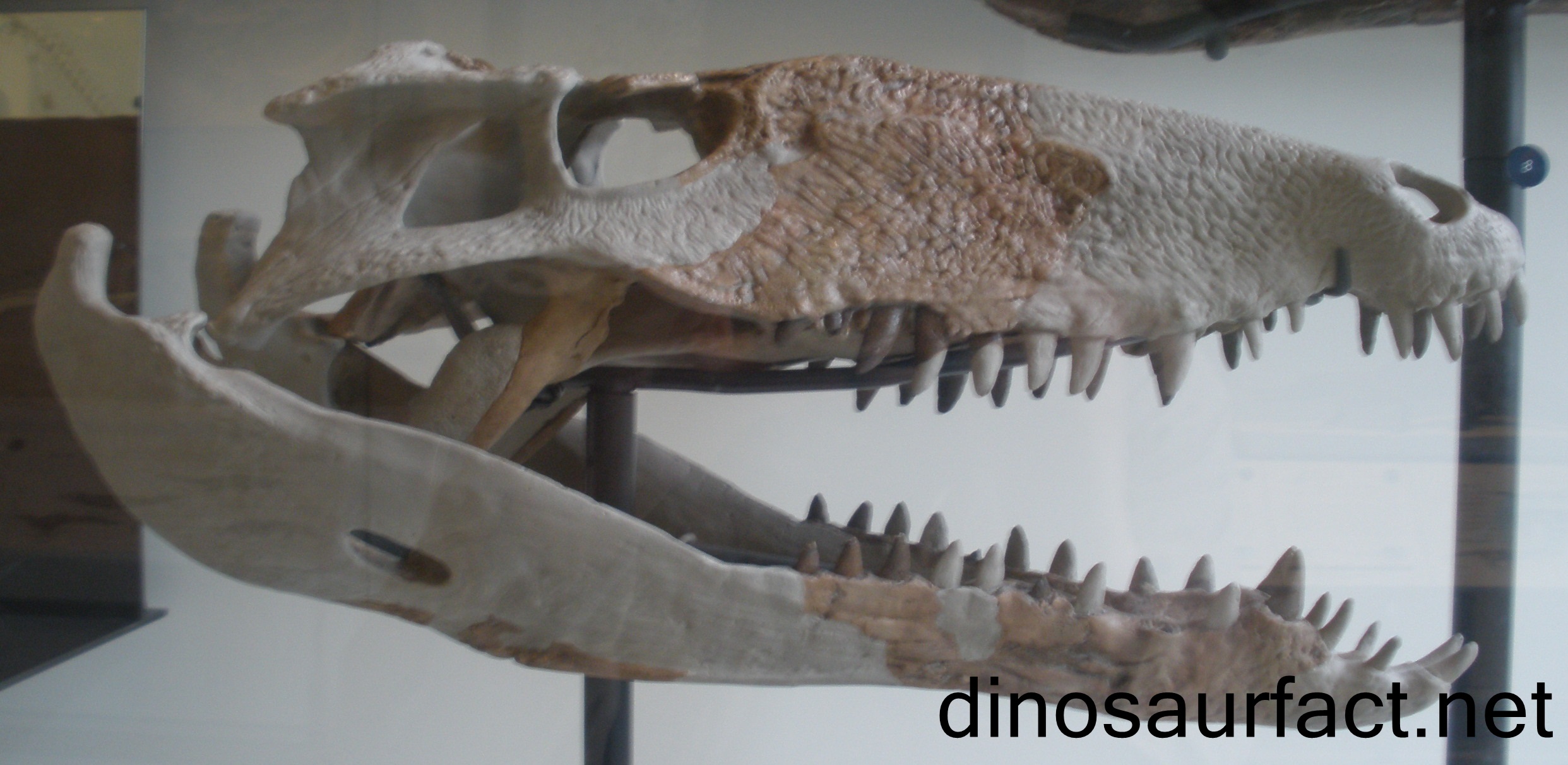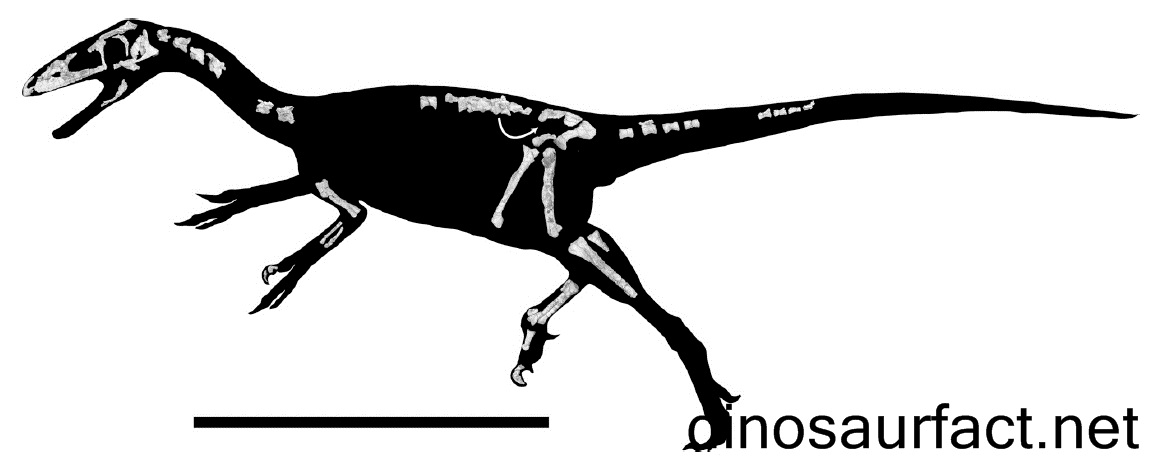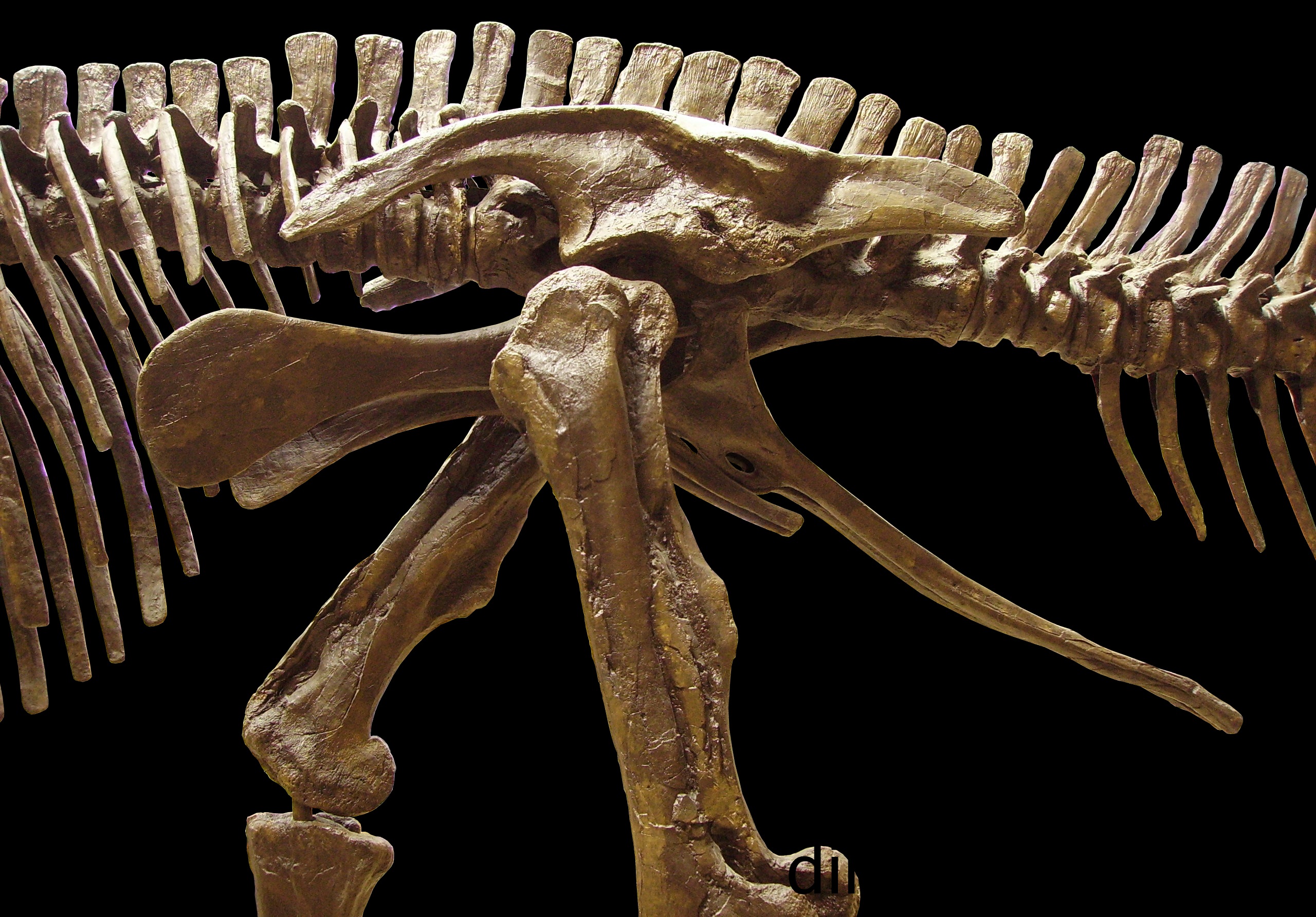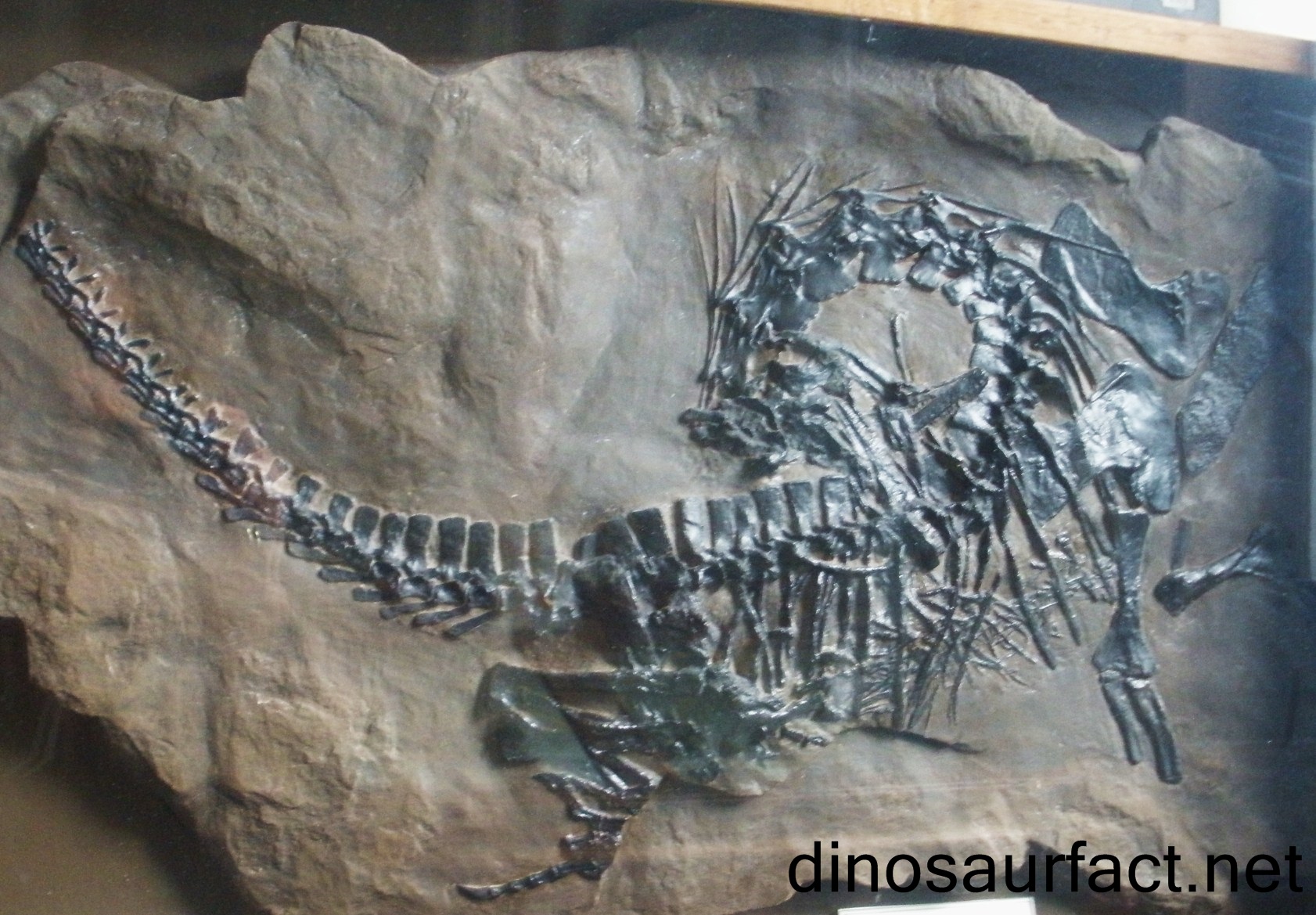 Click to visit the previous dinosaur bio
Click to visit the previous dinosaur bio
 |
|
 |
|
Kingdom: Animalia
Phylum: Chordata
Class: Sauropsida
Superorder: Dinosauria
Suborder: -Not Described-
Family: -Not Described-
Genus: Cryptoraptor
 |
|
 |
|
 |
|

The name Cryptoraptor means “hidden thief”. The Cryptoraptor (not to be confused with the cryptosaurus, an altogether different dinosaur) is the name given to fossil specimens found in the Late Triassic Rocks of New Mexico. It was a meat eating dinosaur and lived approximately 230 million years ago in what is now the continent of North America.
The discovery of fossils
Fossils were discovered in the Bull Canyon Formation in Quay County of New Mexico. The incomplete fossil of only one dinosaur has been found. The fossils include a pubis, vertebrae and parts of the thigh bone. The fossil was discovered by paleontologist Adrian Hunt. Hunt want to name the species Cryptoraptor Lockleyi but the name never got established.
The holotype specimen is named NMMNH P-17375. The specimen is classified after the New Mexico Museum of Natural History (NMMNH). The fossil is on display at the Museum and is a popular exhibit since it’s the only one of its kind in the entire world.
The examination of the pubis fossil has led us to believe that the creature had an “opisthopubic pelvis”, meaning the bone stretched back towards the tail. This is a trait that is seen in many ancient dinosaurs and even modern day birds.
The Bull Canyon Formation
The Bull Canyon Formation is a part of the Chinle Formation of New Mexico. Average cretosaurian fossils have been recovered from this site. It is famous for some rare fossil findings including an anterior Rutiodon tooth. The Chinle formation is a vast formation in the southern part of the North American Continent and has produced many prehistoric fossils.
Not much is known about the species related to the Cryptoraptor. Presently, there are no genera linked to or synonymous with the Cryptoraptor.
Adrian Hunt was the director of the Natural History Museum, New Mexico. He has been a paleontologist for 25 years and took part in many important excavations and discoveries. He is accredited with the discovery of the fossils of the Cryptoraptor.
The Late Triassic Period
The Upper Triassic is the highest epoch from the Triassic period. Many species and genera of dinosaurs and other extinct creatures were a part of this period. This period is important from the point of view of the study of prehistoric animals. It is succeeded by the Jurassic Period. At the end of the Late Triassic Period, there was the disaster that caused the extinction of half the species of living creatures from the earth. This period extends from approximately 235 to 201.3 million years old.
The Upper Triassic consists of three stages: the Rhaetian, Norian and Carnian stages. The Rhaetian is the uppermost stage and the Carnian is the lowermost. The Norian is the intermediate stage.
About the Cryptoraptor
Understanding the Cryptoraptor will help us understands prehistoric carnivores and predators better. The ecological system, the food chain or food web and the food pyramid can be identified by recreating the ecosystem of that era. This will however require the fossils and information about all the dinosaurs of the time to have a complete idea of the ecological aspects.
The Cryptoraptor was a flesh eating dinosaur i.e. a carnivore. It was, in most probability, a bird-like creature with sharp teeth that enabled it to tear the flesh apart. Some scientists suggest that it was a small animal and so they preyed upon smaller animals or in a pack, like wolves. The height, weight and other physical features of the dinosaur could not be identified as the information is too sparse and limited. The claws on the forelimb were curved to help clutching. The claws were rather sharp, helping to kill its prey.
The reconstructed image of the Cryptoraptor suggests that it had only 4 digits on its upper limbs. The tail of the Cryptoraptor was long and tapered, wide at the hip joint and pointed at the end. It helped the dinosaur to maintain balance while praying. The Cryptoraptor has also been thought to have a characteristic sound: a shrill, guttural cry. However there is no conclusive proof of this phenomenon.
The upper or forelimbs of the creature were shorter than the hind limbs. The Cryptoraptor was a bipedal dinosaur, meaning it could walk on two legs, as can be seen from the strong lower limb bones. This helped the dinosaur run fast, and helped it to attack its prey. It could move fast owing to longer lower limbs. Whether it was exclusively terrestrial or aerial cannot be deduced. Due to sparse remains of the fossil, very little information can be furnished about the Cryptoraptor.
The Cryptoraptor is believed to be among the few dinosaurs that survived to the end of the Triassic or even into the Jurassic. The study of this dinosaur will then help paleontologists to understand the behavior of the animals to the anomalies in the geological aspects of the Earth. It lived in the plains of Northern America, which was at that time near the equator and had a rather tropical climate.
The Cryptoraptor is a popular subject for debate, since the data is limited, giving rise to many speculations. Some studies, in an effort to find out more about the Cryptoraptor use the much more popular and better known Tyrannosaurus as a unit of comparison. Such speculation is erroneous and can lead to no conclusive data. It can even confuse the minds of those seeking answers to this almost mythological creature and its habits.
Paleontologists in the world are trying to examine the fossils in the hope of learning something new. Till now no studies of the fossil have provided any major insights regarding the creature. With the new advancements in technology there is a faint hope that something can be determined that will help the paleontological world understand more of these dinosaurs.
Index
Extinct Profiles
 Triassic Dinosaurs
Triassic Dinosaurs Jurassic Dinosaurs
Jurassic Dinosaurs Cretaceous Dinosaurs
Cretaceous Dinosaurs Pterosaurs
Pterosaurs Marine Reptiles
Marine Reptiles Dinosaur Extinction
Dinosaur Extinction